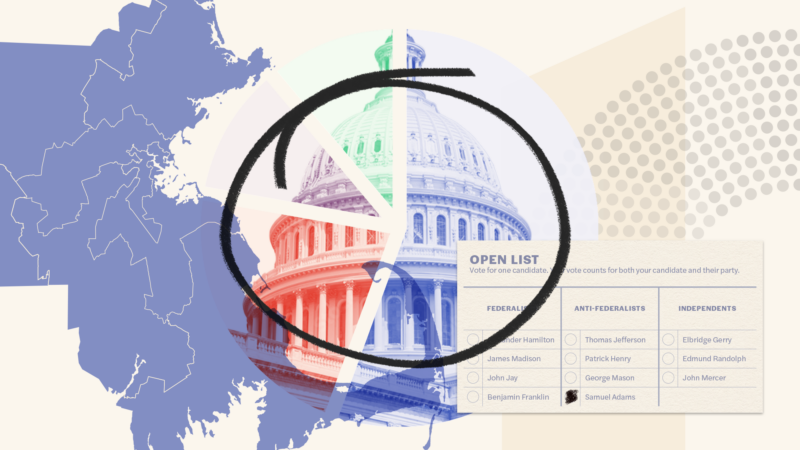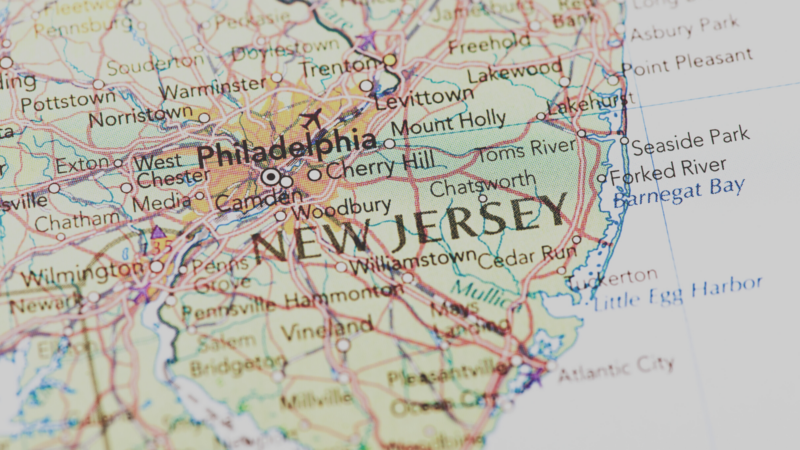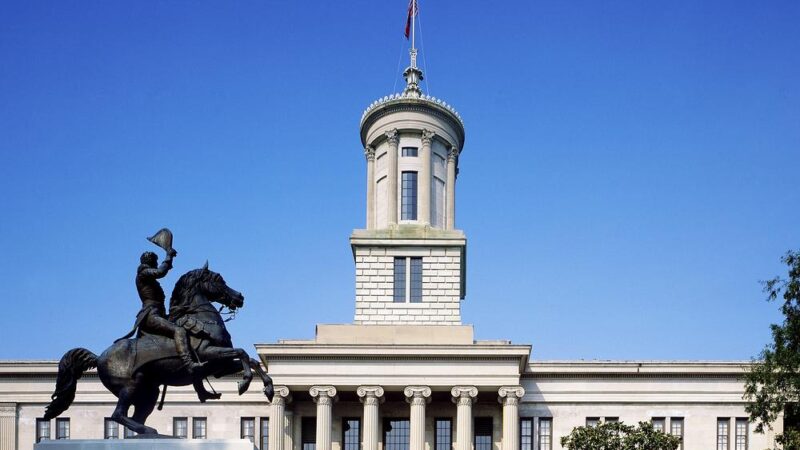The Functions of Political Parties: How Much Should We Trust Political Parties?
- October 10, 2023
From More than Red and Blue: Political Parties and American Democracy

Abstract
According to recent opinion polls in the United States and other democracies, political parties are the least trusted public institution, consistently ranking below the police, judges, even the legislatures which parties help to organize. Such polls are often cited as evidence of democratic malaise with the assumption being that it must be difficult for citizens to support representative democracy if they do not trust the parties that dominate representative processes. Yet is this the right inference to draw from such evidence? This chapter provides context to the notion of trust in political parties, considering the historical origins of anti-party attitudes and the possible benefits of such skepticism. Finally, it relates distrust of (some) parties to the constitutional doctrine of militant democracy, discussing both the theory and practice of measures various democracies have taken to protect against parties that may threaten the democratic order.
Distrust of parties: a democratic pathology?Distrust of parties: a democratic pathology?1Thanks to Jamie M. Wright for her assistance in preparing this chapter.
According to recent opinion polls in the United States and other democracies, political parties are the least trusted public institution. For instance, surveys of 18 European countries conducted over the past two decades found that political parties were consistently the least trusted institution, ranking below the police, courts and even the legislatures which parties help to organize (see Figure 1).2Rounds 2-9 (2004-2018).This covers 15 countries included in all 9 rounds (Belgium, Finland, France, Germany, Hungary, Ireland, Netherlands, Norway, Poland, Portugal, Slovenia, Spain, Sweden, Switzerland, United Kingdom) and 3 countries for which data were available for all but one round (Estonia missing Round 1, Czechia missing Round 3, Denmark missing Round 8). From European Social Survey 2018. Parties stayed at the bottom of the trust ladder even as average trust scores fluctuated and while other institutions changed their relative rankings.
The results are similar for the United States. Thus, in multiple waves of the World Values Survey3Inglehart, Ronald, Christian Haerpfer, Alejandro Moreno, Christian Welzel, Kseniya Kizilova, Juan Diez-Medrano, Marta Lagos, Pippa Norris, Eduard Ponarin and Bi Puranen et al. (eds.). 2020. World Values Survey: All Rounds Country-Pooled Datafile. Madrid, Spain & Vienna, Austria: JD Systems Institute & WVSA Secretariat. (hereafter WVS), political parties emerge as the public institution in which Americans express the least confidence (see Figure 2). In the most recent wave of this survey, only 11.1% of U.S. respondents expressed “a great deal” or “quite a bit” of confidence in political parties. Parties fared only a little better across the other 39 other democracies included in the 2017-22 WVS wave, with an average of 17.1% of citizens expressing strong confidence in political parties, and with parties ranking well below other institutions (see Figure 3).

Numbers such as these are often invoked as evidence that something is wrong with contemporary political parties, and, by extension, with the democracies within which they operate.4Dalton, Russell, and Steven Weldon. 2005. “Public Images of Political Parties: A Necessary Evil?” West European Politics 28 (5): 931-951.5Ignazi, Piero. 2014. “Power and the (il) Legitimacy of Political Parties: An Unavoidable Paradox of Contemporary Democracy?” Party Politics 20 (2): 160-169.6Kim, Myunghee. 2007. “Citizens’ Confidence in Government, Parliament and Political Parties.” Politics & Policy 35(3): 496-521.7Mjelde, Hilmar L, and Lars Svåsand. 2016. “Party Decline?” In Democratic Transformations in Europe, 71-91.8Teixeira, Conceição Pequito, Emmanouil Tsatsanis, and Ana Maria Belchior. 2016. “A ‘Necessary Evil’ Even During Hard Times? Public Support for Political Parties in Portugal Before and After the Bailout (2008 and 2012).”Party Politics 22 (6): 719-731. The usual conclusion is that it must be difficult for representative democracy to flourish if citizens distrust the very parties that play a key role in such representation. These conclusions have been bolstered by studies in both the U.S. and elsewhere that explore the political implications of low trust in public institutions in general, and of political parties more specifically. Some of the more worrying findings suggest that citizens with comparatively low political trust have an above-average tendency to vote (using “voice” rather than “exit), but they are disproportionately likely to vote for anti-incumbent and outsider alternatives, including radical ones.9On the impact of party trust, see Ceka 2013 and Okolikj et. al. 2022 However, other studies contradict these findings, leaving uncertainty about the extent and direction of such relationships.10Citrin, Jack, and Laura Stoker. 2018. “Political Trust in a Cynical Age.” Annual Review of Political Science 21: 49-70.11Gabriel, Oscar W. 2017. “Participation and Political Trust.” In Handbook on Political Trust, 228-241. Edward Elgar Publishing.12Levi, Margaret, and Laura Stoker. 2000. “Political Trust and Trustworthiness.” Annual Review of Political Science 3 (1): 475-507.

Other evidence also suggests that caution is in order when interpreting these eye-catching surveys. For one thing, as both the European Social Survey and WVS figures show, this is not a new development. Parties have been persistently placed at the bottom when comparing responses to questions about “trust” or “confidence” in various public institutions. While the scores have indeed gone down slightly in the U.S. over the past 15 years, they have slightly increased in the European sample, which argues against seeing this as a monolithic or one-directional phenomenon. Also, it is relevant to note that the institutions in which citizens express more confidence — including the courts, the police, and the armed forces (see Figure 3) — are institutions which deliberately cultivate public trust because, in democracies, these institutions cannot function well if they lack a high degree of popular legitimacy. In that sense, they are much different from parties (plural), which contribute to functioning democracies by competing with each other.

Moreover, these same surveys show that the countries in which residents are most likely to express strong confidence in parties are one-party and one-party dominant regimes. In the most recent WVS sample, among countries earning Freedom House “Free” scores, only Norway and Sweden have over 30% of residents who express such confidence. None of the most populous democracies in the sample score above 26%; in most, the proportion of respondents expressing such confidence lies between 10% and 25% (see Figure 4). While the United States is towards the bottom of this range, it is by no means an outlier. Overall, public wariness towards political parties is the rule in all democracies, at least when measured in this way.

These varied results suggest that perhaps we should be rephrasing our question to ask: “how much should citizens trust their parties in a democracy?” If extremely high confidence in parties is associated with autocracies and one-party regimes, it may be worth considering if there are ways in which a distrustful or wary citizenry could be an asset for democracies. And indeed, it is a central premise of the “responsible party”13Ranney, Austin. 1954. The Doctrine of Responsible Party Government: Its Origins and Present State. Urbana, Illinois: The University of Illinois Press. and other ideal-type models of representative government that citizens will use elections to hold parties accountable for delivering on their promises: citizens are expected to monitor parties, not just trust them. In addition, the notion of partisanship itself assumes that politically engaged citizens will favor (and therefore trust) one party more than others.
It is not irrational for a person to express skepticism about parties in general (parties plural) while also expressing support for a specific party. In fact, this resembles the tendency of Americans to express negative views about Congress while expressing positive views about the Member of Congress who represents their district.14Fenno Jr., Richard F. 1978. Homestyle: Members of Congress in Their Constituencies. New York: Little, Brown.15Parker, Glenn R., and Roger H. Davidson. 1979. “Why Do Americans Love Their Congressman So Much More Than Their Congress?” Legislative Studies Quarterly: 53-61. Regarding political parties, in the 2017-22 WVS wave, 83% of the U.S. respondents who expressed no or not very much confidence in political parties also described themselves as supporting one of the parties; 46% described themselves as party members. It thus may be that the expressed lack of confidence in parties is a verdict on how parties interact with each other, inasmuch as “partisanship” has become a synonym for unproductive conflict, as opposed to approaches to politics that are seen as more cooperative and effective.16Klar, Samara, and Yanna Krupnikov. 2016. Independent Politics. Cambridge University Press. All this suggests that skepticism of parties may be closely linked to some of the central drivers of electoral representation, and therefore at least some of its effects may be healthy.
The Long History of Party DistrustThe Long History of Party Distrust
We can better understand contemporary views of political parties by remembering that distrust of parties is an attitude with a long and distinguished pedigree. When James Madison17Madison, James. 1787. “Federalist No. 10.” The Federalist Papers. https://avalon.law.yale.edu/18th_century/fed10.asp Mainwaring, Scott, and Timothy Scully. 1995. Building Democratic Institutions: Party Systems in Latin America. Stanford University Press. warned against “the mischiefs of faction” in Federalist 10, he was drawing on a well-established strand of political thought which portrayed parties as inimicalto national welfare. Indeed, prior to the 20th century — which means prior to widespread experience with mass electoral democracy — many writings on political parties started with an etymological nod, pointing out that the word “party” (“partie” in French, “partei” in German) came from the Latin verb partire: to divide. Because disunited countries were considered to be particularly vulnerable to outside enemies, forces which aggravated internal divisions were viewed as threats to a country’s welfare.18On the holistic arguments against parties, see Rosenblum 2010, 1. During the nineteenth century, many commentators began expressing more grudgingly accepting views of parties, often marked by efforts to distinguish between healthy “parties” (which prioritized the national welfare) and unhealthy “factions” (which always put their particular interest ahead of the common good).19Rosenblum, Nancy L. 2010. “On the Side of the Angels.” In On the Side of the Angels. Princeton University Press. Scarrow, Susan E. 2002. Perspectives on Political parties: Classic Readings. Springer. As the Swiss legal theorist Johan Caspar Bluntschli phrased it in 1869, “A faction is a distorted party; it is a denatured party. Just as parties are necessary and useful at the highest levels of conscious and free public life, so factions are unnecessary and corrupting…Parties complete the state; factions rip it apart.”20Scarrow, Susan E. 2002. Perspectives on Political Parties: Classic Readings. Springer. At the end of the century, Henry Jones Ford21Ford, Henry Jones. 1898. The Rise and Growth of American Politics: A Sketch of Constitutional Development, 127. (future president of the American Political Science Association) still made such a differentiation when he noted that, “The distinction between party and faction seems to be this: party aims at administrative control, while faction is the propaganda of a particular interest.”
Ideas about political parties’ role in national political life continued to evolve in more favorable ways alongside the emergence of mass electoral democracy, and the concomitant rise of new modes of party organization. To be sure, party practices were often seen as corrupt, and the late nineteenth and early twentieth century brought reforms in several countries aimed at curbing perceived excesses of party-based electoral competition. These included the adoption of stringent campaign spending restrictions in the UK (the Corrupt and Illegal Practices Prevention Act 1883) and such U.S. Progressive-era reforms as the adoption of non-partisan municipal elections, primary elections, and referendums.22Scarrow, Susan E. 2006. “The Nineteenth-Century Origins of Modern Political Parties: The Unwanted Emergence of Party-Based Politics.” Handbook of Party Politics: 16-24. While these reforms may have weakened U.S. municipal party machines, they did not undermine (and probably helped strengthen) the electoral dominance of the two major parties. More generally, as an increasing number of countries adopted broad electoral suffrages in the first decades of the twentieth century, political observers came to accept political parties as inevitable parts of the machinery of representative democracy. This manifested itself in the emerging pluralist consensus in the U.S. academic community that viewed multiple and competing political parties as benign forces that helped to articulate and channel competing social interests.23Key, V. O. 1942. Politics, Parties, & Pressure Groups. Fifth edition. ed. New York: Crowell.24Truman, David B. 1951. The Governmental Process: Political Interests and Public Opinion. Westport, CT: Praeger. In this vein, Schattschneider’s much-cited book on Party Government begins with a chapter titled “In defense of party government.”25Schattschneider, Elmer Eric. 1942. Party Government. New York: Holt, Rinehart, and Winston.26Key, Truman, and Schattschneider all served as presidents of the American Political Science Association. A general wariness of divisive parties had been displaced by a greater wariness of the unchanneled energies of the masses and by a respect for the many “functions” that parties could play in organizing representative democracy.
The militant democracy mindset would argue that some skepticism towards parties is a healthy thing, especially when that skepticism is translated into institutional guardrails.
Yet for some scholars this perspective was tinged by fears that malign parties could also use the procedures and liberties of electoral democracies to undermine democratic systems. This view was expressed in particularly strong terms by scholars with firsthand experiences of the collapse of European democracies in the 1920s and 1930s, who argued that some types of parties should not be trusted, and definitely should not be entrusted with the levers of state. Unlike nineteenth century efforts to distinguish healthy uniting parties from unhealthy divisive factions, for these observers the main concern was parties which aspired to dominate the political sphere, and were willing to use all means to suppress competitors.27Loewenberg, Gerhard. 2006. “The Influence of European Émigré Scholars on Comparative Politics, 1925-1965.” American Political Science Review 100 (4): 597-604.28Neumann, Sigmund. 1932. “Demokratie und Partei.” Zeitschrift für Sozialforschung 1 (3): 453-454.29Neumann, Sigmund. 1954. “Toward a Theory of Political Parties.” World Politics 6 (4): 549-563. One of the first scholars to spell out the policy consequences of this view was the German émigré scholar Karl Loewenstein30Loewenstein, Karl. 1935. “Autocracy Versus Democracy in Contemporary Europe, II.” American Political Science Review 29 (5): 755-784.31Loewenstein, Karl. 1937a. “Militant Democracy and Fundamental Rights, I.” American Political Science Review 31 (3): 417-432.32Loewenstein, Karl. 1937b. “Militant Democracy and Fundamental Rights, II.” American Political Science Review 31(4): 638-658., who introduced and elaborated on the “militant democracy” term in a series of articles published in the American Political Science Review. Loewenstein’s calls to action were filled with recent European examples of democracies that had failed to protect themselves from forces seeking to overturn the democratic order; he also presented examples of a few countries that had acted more decisively and successfully. Loewenstein33Loewenstein, Karl. 1937a. “Militant Democracy and Fundamental Rights, I.” American Political Science Review 31 (3): 431. decried the “legalistic self-complacency and suicidal lethargy” that had prevented other democracies from taking similar steps to protect themselves from internal enemies. The militant democracy solutions he praised included prohibitions against parties that advocated subversion and those adopting paramilitary formations. Regarding the latter, he argued that parties seeking to organize their own armies of partisans threatened democracy by the power of their emotional appeals, as well as by threatening the state’s monopoly of force.34Loewenstein, Karl. 1937b. “Militant Democracy and Fundamental Rights, II.” American Political Science Review 31(4): 638-658. Loewenstein’s calls to action did not stop the tide of fascism in the 1930s, but the militant democracy response he called for — a response prompted by distrust of (some) political parties — has had a more lasting impact in shaping state responses to actual or possible threats of parties seeking to overturn the democratic order by electoral means.
Party Distrust and Militant DemocracyParty Distrust and Militant Democracy
In contemporary discourse, the militant democracy label is applied to constitutional approaches that treat democratic institutions as requiring protection against (mis)use. In this view, “for the purpose of preventing a doom scenario for democracy, it seems to be justifiable to limit and restrict certain fundamental rights, if this is based on and is in accordance with the rule of law.”35Klamt, Martin. 2007. “Militant Democracy and the Democratic Dilemma: Different Ways of Protecting Democratic Constitutions.” Explorations in Legal Cultures 133: 153. Legal or constitutional practices that are considered “militant democracy” approaches generally focus on banning, or limiting privileges enjoyed by, political parties or other associations that are considered to present a threat to democracy—sometimes with the further requirement that this threat must be more than ideological and must include plans for, or incitement of, violence. Some militant democracy provisions, such as those in Germany’s constitution, go further by allowing the state to strip political rights or privileges (such as the right to civil service employment) from individuals advocating the overthrow of the democratic order, including those who belong to parties legally recognized as hostile to the constitutional order.36Capoccia, Giovanni. 2013. “Militant Democracy: The Institutional Bases of Democratic Self-preservation.”Annual Review of Law and Social Science 9: 207-226.37Müller, Jan-Werner. 2012. “Militant Democracy.” The Oxford Handbook of Comparative Constitutional Law, 1263.
Although the concept of militant democracy was first elaborated in the flagship journal of the American Political Science Association, it has been more influential on constitutional and legal practice outside the United States.38Capoccia, Giovanni. 2013. “Militant Democracy: The Institutional Bases of Democratic Self-preservation.”Annual Review of Law and Social Science 9: 207-226.39Klamt, Martin. 2007. “Militant Democracy and the Democratic Dilemma: Different Ways of Protecting Democratic Constitutions.” Explorations in Legal Cultures 133: 154.40Müller, Jan-Werner. 2012. “Militant Democracy.” The Oxford Handbook of Comparative Constitutional Law, 1263-1269.41Pedahzur, Ami. 2001. “Struggling with the Challenges of Right-Wing Extremism and Terrorism within Democratic Boundaries: A Comparative Analysis.” Studies in Conflict and Terrorism 24 (5): 339-359.42Thiel, Markus. 2009. The ‘Militant Democracy’ Principle in Modern Democracies. Edited by Markus Thiel. Ashford. This was not for lack of trying, and more because some militant democracy responses proved difficult to square with U.S. constitutional traditions which prioritize individual rights. For instance, these U.S. constitutional traditions led the Supreme Court of the 1960s to overturn legislative efforts to suppress the Communist Party on grounds that political speech and assembly were constitutionally protected as long as the groups were not actively violent (in other words, criminal); it also rejected laws that punished or restricted the rights of individuals solely on the basis of their party affiliation.43Barber, Kathleen L. 1966. “The Legal Status of the American Communist Party: 1965.” Journal of Public Law 15: 94. 44Issacharoff, Samuel. 2006. “Fragile Democracies.” Harvard Law Review 120: 1405.45Tushnet, Mark V. 2009. “United States of America”. Edited by Markus Thiel. The ‘Militant Democracy’ Principle in Modern Democracies. Farnham, Surrey, UK: Ashgate. Some have also argued that in the U.S. the perceived need to develop such protections has been low because the country’s first-past-the post electoral system makes it much harder for smaller (potentially more radical) parties to win legislative seats compared to countries that use proportional representation election rules.46Bourne, Angela K. 2018. Democratic Dilemmas: Why Democracies Ban Political Parties. Routledge.47Issacharoff, Samuel. 2006. “Fragile Democracies.” Harvard Law Review 120: 1405. In addition, the U.S. Constitution is comparatively difficult to amend, making the U.S. system relatively less vulnerable to being rapidly and radically changed by individual leaders, whatever their popularity or populism.48Lutz, Donald S. 1994. “Toward a Theory of Constitutional Amendment,” American Political Science Review 88 (2): 355-70.49Weyland, Kurt. 2020. “Populism’s Threat to Democracy: Comparative Lessons for the United States.” Perspectives on Politics 18 (2): 389-406.
Outside the U.S., the doctrine of militant democracy has been particularly influential in post-authoritarian democracies, with a notable early example being the 1949 constitutional Basic Law for the Federal Republic of (West) Germany.50Karvonen, Lauri. 2007. “Legislation on Political Parties: A Global Comparison.” Party Politics 13 (4): 437-455.51Klamt, Martin. 2007. “Militant Democracy and the Democratic Dilemma: Different Ways of Protecting Democratic Constitutions.” Explorations in Legal Cultures 133: 154. Here and elsewhere, political parties have been the focus of many of the measures associated with the militant democracy tradition. Such measures include requiring parties to adopt internally democratic structures or restricting or even banning parties which seek to undermine such fundamental aspects of democratic systems as multi-party competition or protection of minority rights.52Issacharoff, Samuel. 2006. “Fragile Democracies.” Harvard Law Review 120: 1405.53Müller, Jan-Werner. 2012. “Militant Democracy.” The Oxford Handbook of Comparative Constitutional Law, 1263-1269. The constitutions and party laws of at least 30 contemporary European countries provide for banning parties that threaten the democratic system, whether that threat be violent or ideological.54Bourne, Angela K., and Fernando Casal Bértoa. 2017. “Mapping ‘Militant Democracy’: Variation in Party Ban Practices in European Democracies (1945-2015).” European Constitutional Law Review 13 (2): 221-247. Decisions on when such threats reach a critical level are usually settled by the country’s high court or other judicial authority, a practice explicitly endorsed by the Council of Europe.55Council of Europe, European Commission for Democracy through Law. 2000. Guidelines on Prohibition and Dissolution of Political Parties and Analogous Measures. Council of Europe, European Commission for Democracy
through Law. https://www.venice.coe.int/webforms/documents/default.aspx?pdffile=CDL-INF(2000)001-e. These provisions have been used only sparingly, but often enough to make them more than hypothetical devices. For instance, Bourne and Casal Bértoa56Bourne, Angela K., and Fernando Casal Bértoa. 2017. “Mapping ‘Militant Democracy’: Variation in Party Ban Practices in European Democracies (1945-2015).” European Constitutional Law Review 13 (2): 221-247. document 36 parties banned in 19 European democracies between 1945 and 2015 (with another 16 banned in Turkey in those same years). The obvious risk of employing militant democracy responses to perceived threats to the democratic order is that such measures resemble the very malady they seek to treat. Nevertheless, some contemporary constitutional theorists in the European tradition continue to argue for the legitimacy and even necessity of a militant democracy legal culture as long as it is implemented under strict legal procedures. It is unlikely that the U.S. will re-open discussions about whether it could ever be constitutionally permissible to restrict parties which are ideologically anti-democratic but which do not directly engage in violent or otherwise illegal actions. Nevertheless, U.S. discussions of how to respond to anti-democratic proponents could be enriched by greater awareness of the militant democracy mindset that is accepted in some other democracies, one that considers it both legitimate and necessary for democracies to anticipate and respond to internal threats, rather than just trusting that the normal democratic procedures are robust enough to withstand internal challengers.
How much should citizens trust their political parties?
This returns us to the question posed above: how much should citizens trust their political parties (in aggregate)? The militant democracy mindset would argue that some skepticism towards parties is a healthy thing, especially when that skepticism is translated into institutional guardrails.57Citrin and Stoker reached a similar conclusion about political trust in general, arguing that skepticism might be a rational starting point, lying somewhere between blind faith and total absence of trust (2018). Moreover, and as has been seen above, while some respondents may express distrust of parties due to democratic disaffection, for others it may result from a preference for a specific party, or for consensual policy making. In other words, it is as likely to be a sign of democratic health as anything else.
If generalized trust in parties is an ambiguous metric for assessing the health of our political parties, are there better factors to consider? We could begin with militant democracy’s conclusion that parties pose a health risk if they explicitly aim to subvert the democratic order. But beyond this, research in comparative politics offers little firm guidance. For instance, on the one hand research suggests that democratic stability is jeopardized in countries where parties and party systems are weakly institutionalized — meaning places where parties have poorly developed internal organizations and career ladders, have weak links to groups in society, and are unable to inspire voter loyalty.58Mainwaring, Scott, and Timothy Scully. 1995. Building Democratic Institutions: Party Systems in Latin America. Stanford University Press.59Rosenblatt, Fernando. 2018. Party Vibrancy and Democracy in Latin America. Oxford University Press. But on the other hand, other research suggests that where parties show high levels of the preceding traits, countries can suffer from their parties being over-institutionalized. Such party systems have been dismissed as being “sclerotic” or “cartelized” and as producing the kind of popular disaffection that may lead to political instability and radical upheaval because dominant parties and party elites block less disruptive modes of entry for new actors and new ideas.60Ignazi, Piero. 2014. “Power and the (il) Legitimacy of Political Parties: An Unavoidable Paradox of Contemporary
Democracy?” Party Politics 20 (2): 160-169.61Katz, Richard S, and Peter Mair. 1995. “Changing Models of Party Organization and Party Democracy: the Emergence of the Cartel Party.” Party Politics 1 (1): 5-28. These competing assessments imply that party- based democracy may be healthiest when it steers between these extremes62Piñeiro Rodríguez, Rafael, and Fernando Rosenblatt. 2020. “Stability and incorporation: Toward a New Concept of Party System Institutionalization.” Party Politics 26 (2): 249-260., but they offer little generalizable policy advice on how to reach and maintain such a state. In part that is because when writing policy prescriptions, as with medical prescriptions, it is most effective to start by diagnosing specific ailments rather than by guessing the causes of general malaise. This is a task pursued by other chapters in this volume.
The analysis, views, and conclusions contained herein reflect those of the author(s) and do not reflect the views of the American Political Science Association or Protect Democracy.
Related Content
It can happen here.
We can stop it.
Defeating authoritarianism is going to take all of us. Everyone and every institution has a role to play. Together, we can protect democracy.
Donate
Sign Up for Updates Sign Up for Updates
Explore Careers Explore Careers
How to Protect Democracy How to Protect Democracy



